Robot odometer calibration
Hint
The operating environment and software and hardware configurations are as follows:
- OriginBot robot(Visual Version/Navigation Version)
- PC:Ubuntu (≥20.04) + ROS2 (≥Foxy)
- tape measure
- Mobile phone compass/protractor
Due to the slight differences in the physical properties of each robot's motor and encoder, preliminary calibration has been carried out in the code, and in order to achieve better positioning results, it is still recommended to perform the following calibration operations for each actual robot in hand.
Preparation
In the workspace of the robot side, open the launch folder under the originbot_base function package and change the calibration coefficient that comes with the robot.launch.py to "1.0":
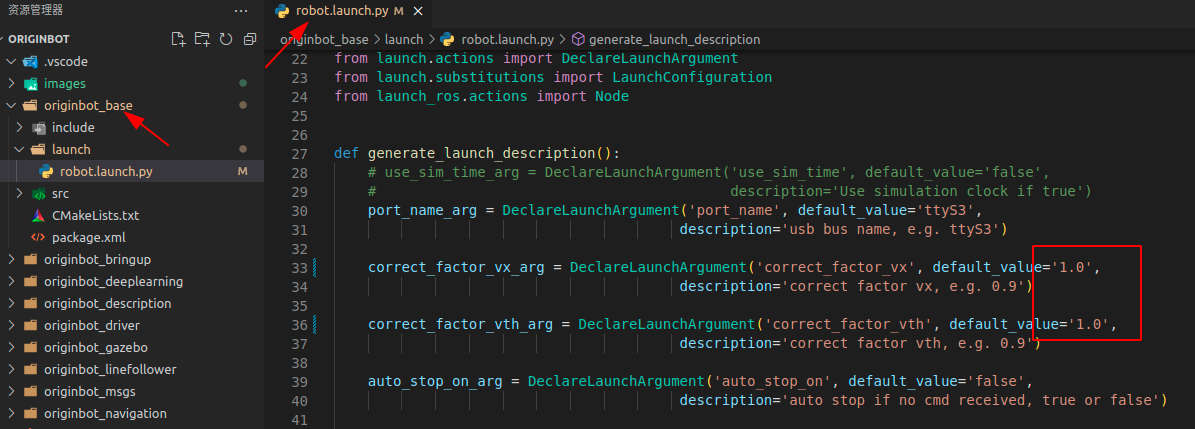
Hint
Note that the modification uses the floating-point format, and the modification needs to be recompiled to take effect.
Linear velocity calibration
The principle of linear velocity calibration is to find the linear proportional relationship between the actual velocity and the calculated velocity, and make the calculated velocity as close to the actual velocity as possible through the linear coefficient.
The procedure is as follows:
-
Unfold the tape measure and place it on the ground as a reference for the actual straight-line mileage:
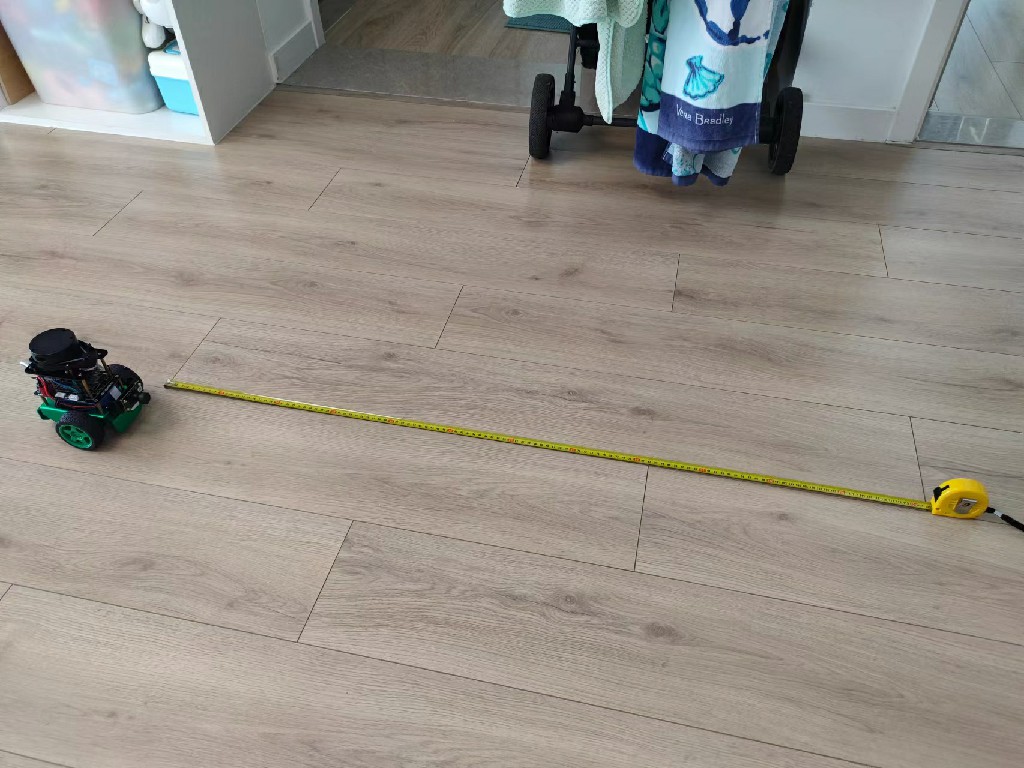
-
Place the robot at the zero position of the tape measure scale, using the front edge of the robot's chassis as a reference line:
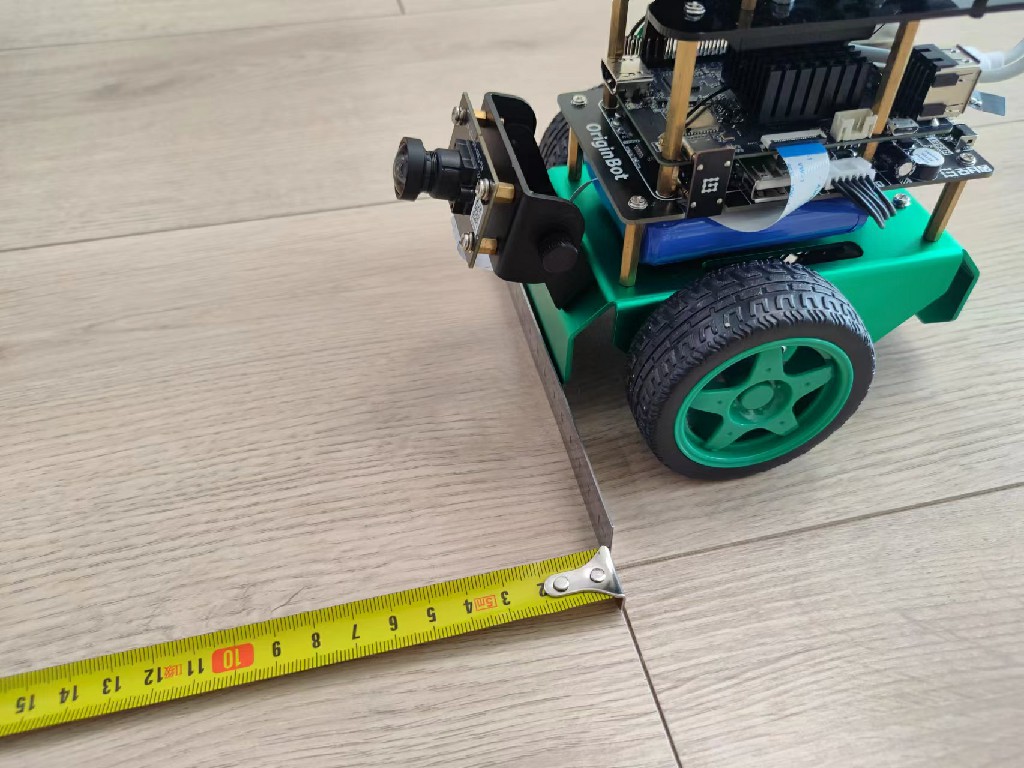
-
Start the robot chassis:
-
Dynamic display of robot odometer data
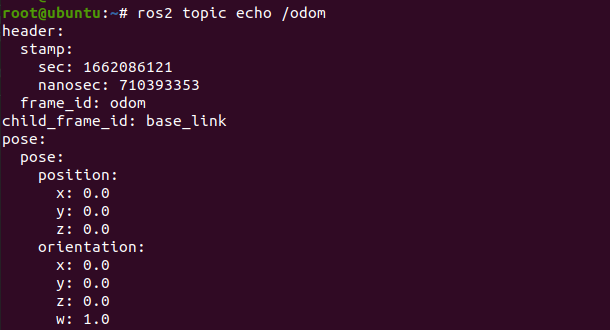
- Start the keyboard control node, slow down a bit, and control the forward movement of the robot:
- After moving for a certain distance, such as about 1m, stop running, and check the actual distance of the robot at this time, as well as the cumulative distance of ODOM feedback.
For example, the actual distance traveled at this time is 1.023m:
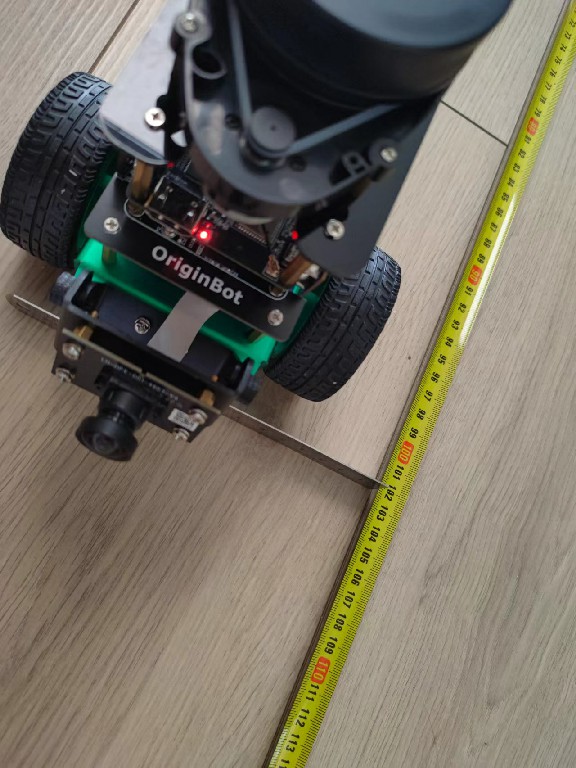
The odometer feedback is 1.139m:
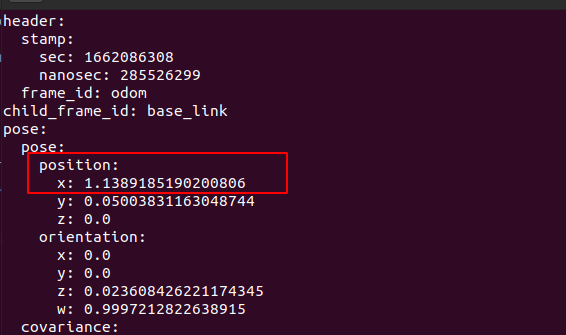
-
Calibration factor for calculating line velocity = actual running distance/odometer feedback distance For example: 1.023/1.139 = 0.898
-
Fill in the calibration parameters into the robot.launch.py, and the linear speed calibration is completed

Hint
In order to improve the calibration accuracy, the above steps can be repeated 3~5 times, and the calculated coefficients are averaged.
Angular velocity calibration
The principle of angular velocity calibration is to find the linear proportional relationship between the actual angular velocity and the calculated angular velocity, and make the calculated angular velocity as close to the actual angular velocity as possible through the linear coefficient.
-
Place the robot on a level ground and look for a reference line on the ground, or artificially draw a reference line as the zero point for the robot to rotate:
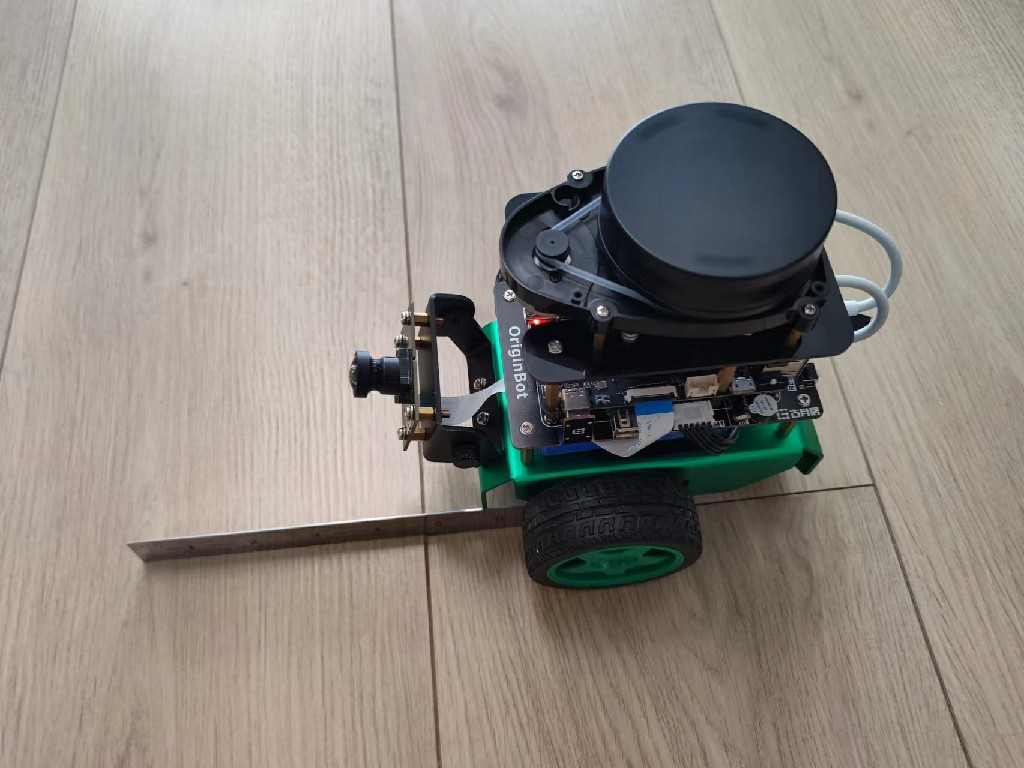
-
Start the robot chassis:
- Dynamic display of robot odometer data:

- Start the keyboard control node, slow down a little, and control the robot to rotate in place:
-
After rotating at a certain angle, such as about 300 degrees, stop the operation and mark the attitude reference line of the robot at this time
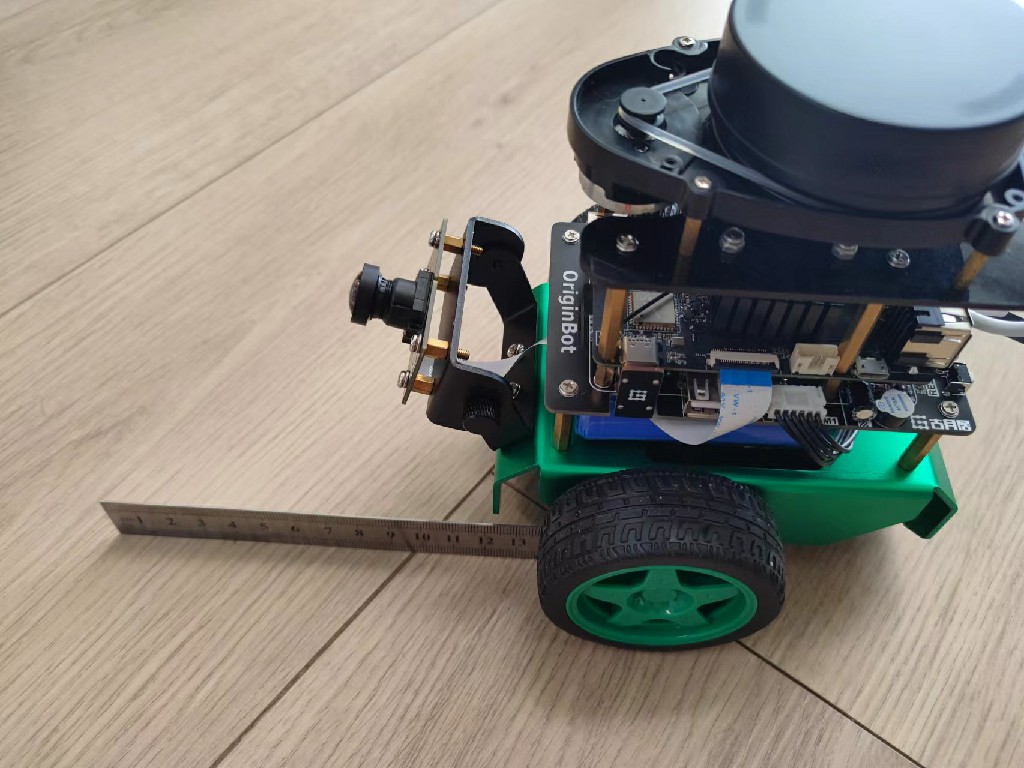
-
Calculate the actual angle of rotation of the robot: it can be measured with a protractor or with the compass of your phone.
For example, when the robot is at zero point, the angle displayed by the mobile phone compass is 21 degrees
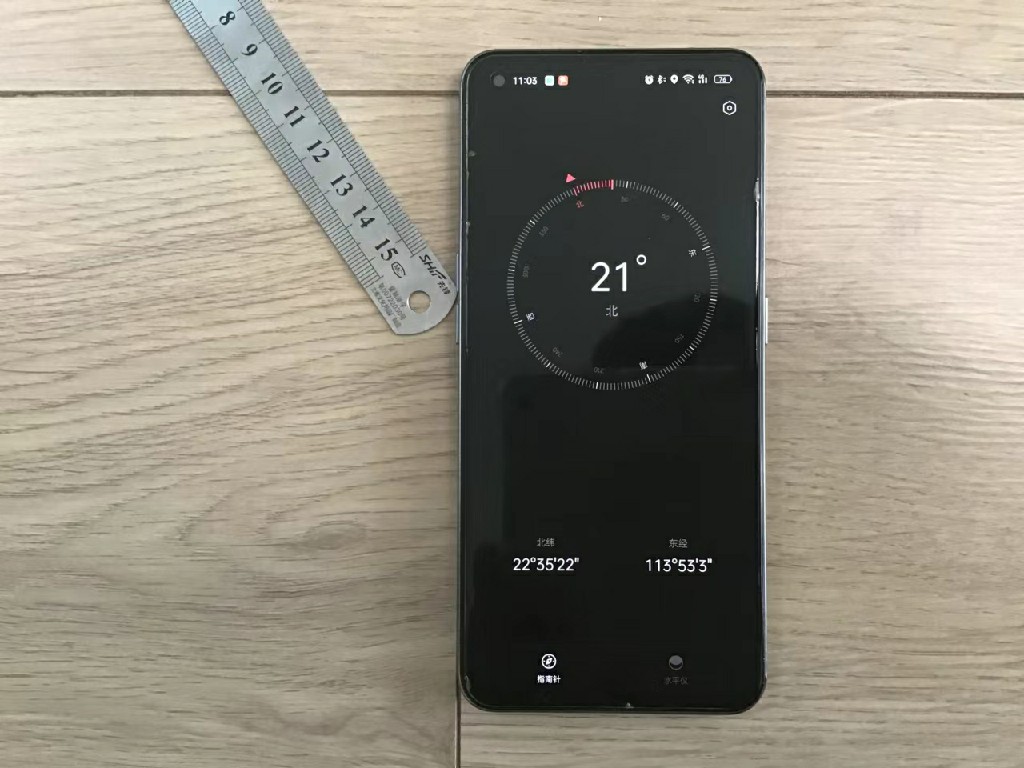
When the robot stops moving, the angle displayed by the mobile phone compass is 341 degrees
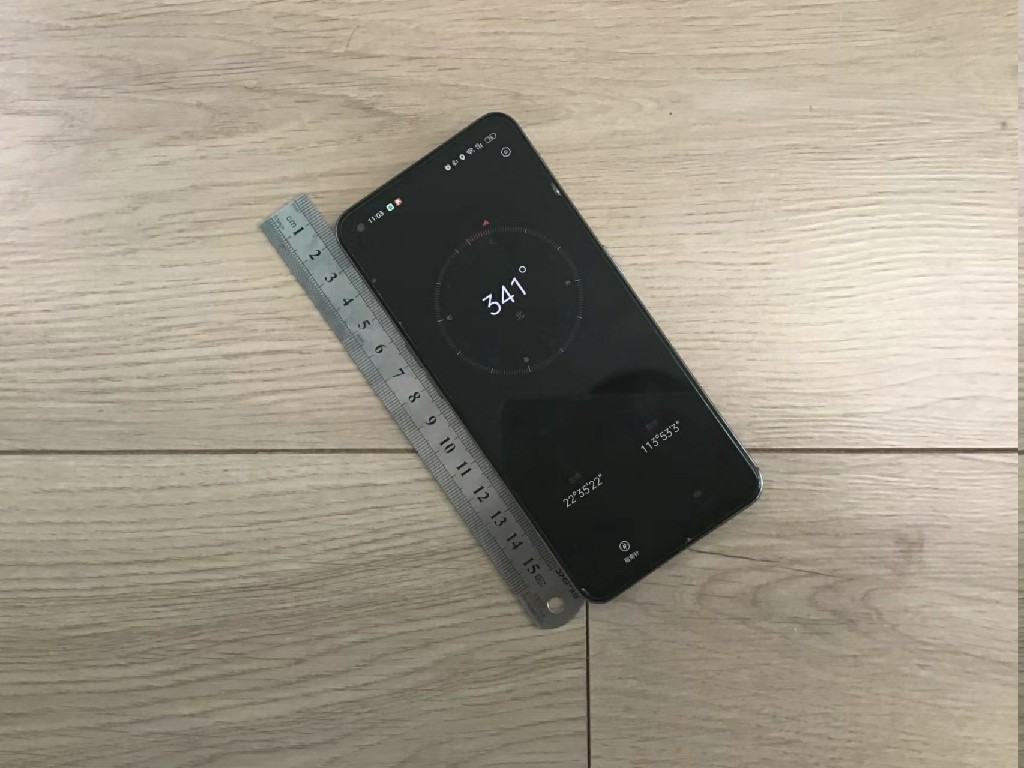
The actual angle of rotation of the robot is: 341 - 21 = 320 degrees
The rotation angle of the odometer feedback at this point is:

The pose in ROS shows the quaternion by default, and we need to convert the quaternion to Euler angles, which can be done online using quaternions website:
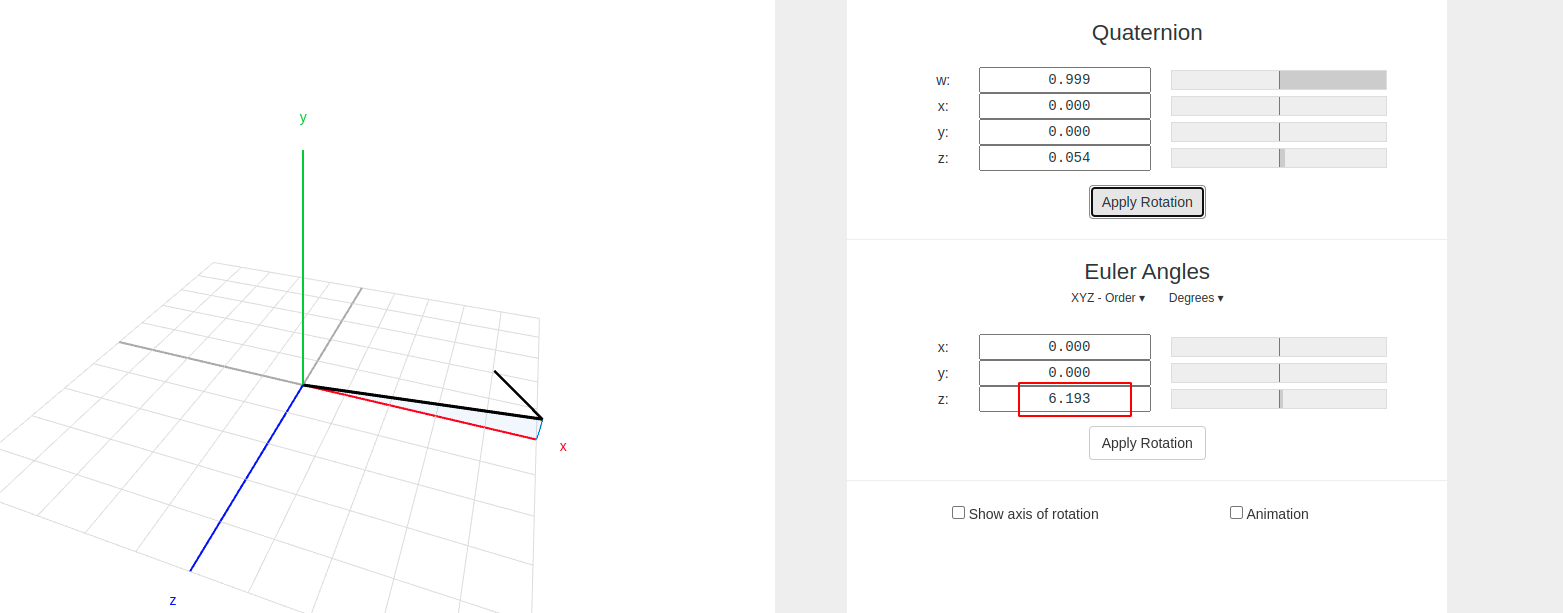
From the calculation results, it can be found that the robot odometer should be rotated by 6.193 after the integral exceeds 360 degrees, that is, the total integral rotates by 360+6.193 = 366.193 degrees
-
Calibrations for calculating angular velocity = angle of actual rotation / odometer feedback angle For example: 320/366.193 = 0.874
-
Fill in the calibration parameters into the robot.launch.py, and the angular velocity calibration is completed
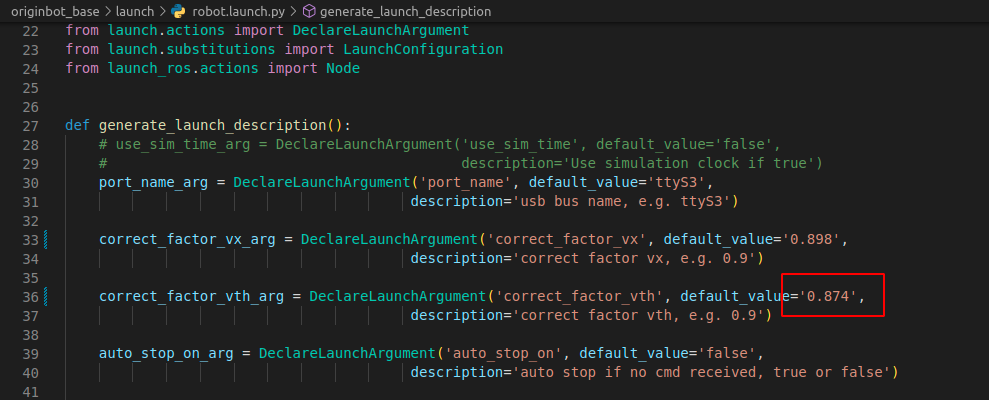
Hint
In order to improve the calibration accuracy, the above steps can be repeated 3~5 times, and the calculated coefficients are averaged.
Calibration complete
After the above calibration operations are completed, you need to recompile the workspace for this to take effect.
After restarting the robot chassis, you can continue to control the robot movement, compare the distance and angle of the actual operation of the robot, and whether the value of the feedback in the ODOM is close, if the error is not large, the calibration is completed, if there is still a large error, please repeat the above calibration operation.
